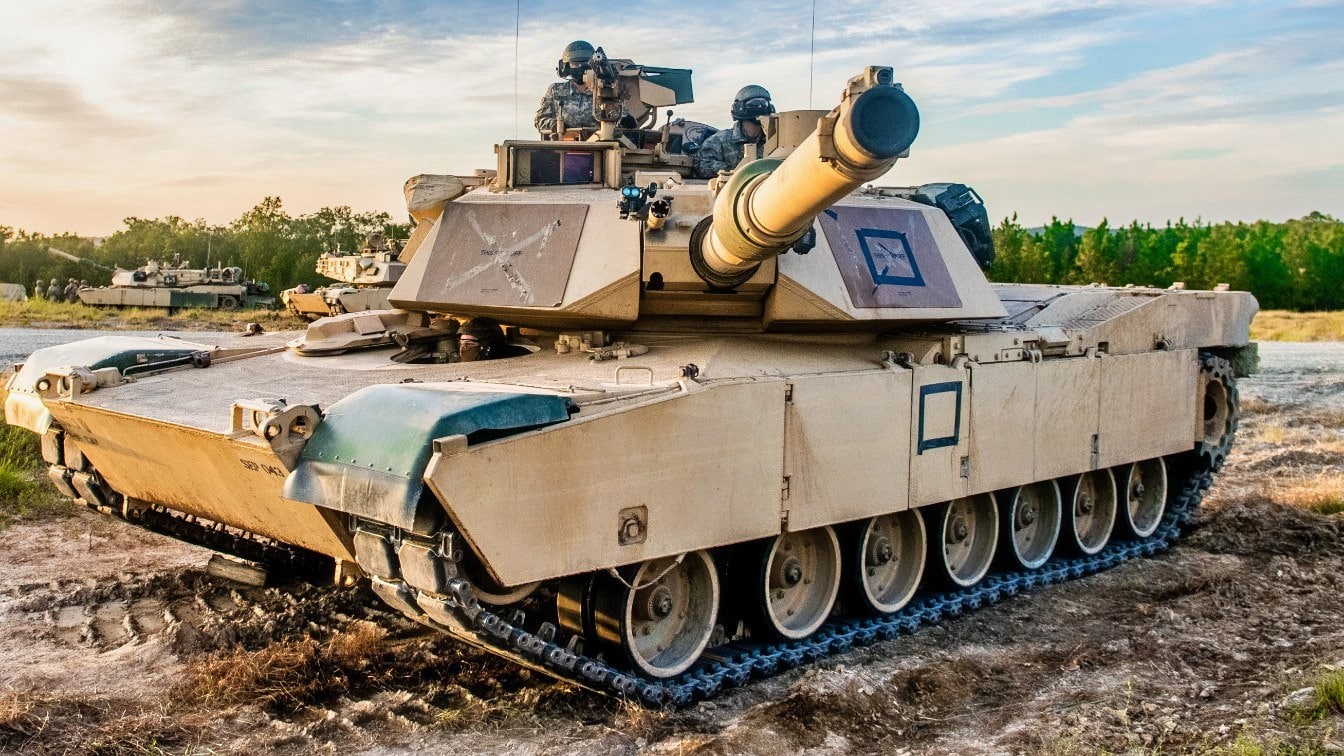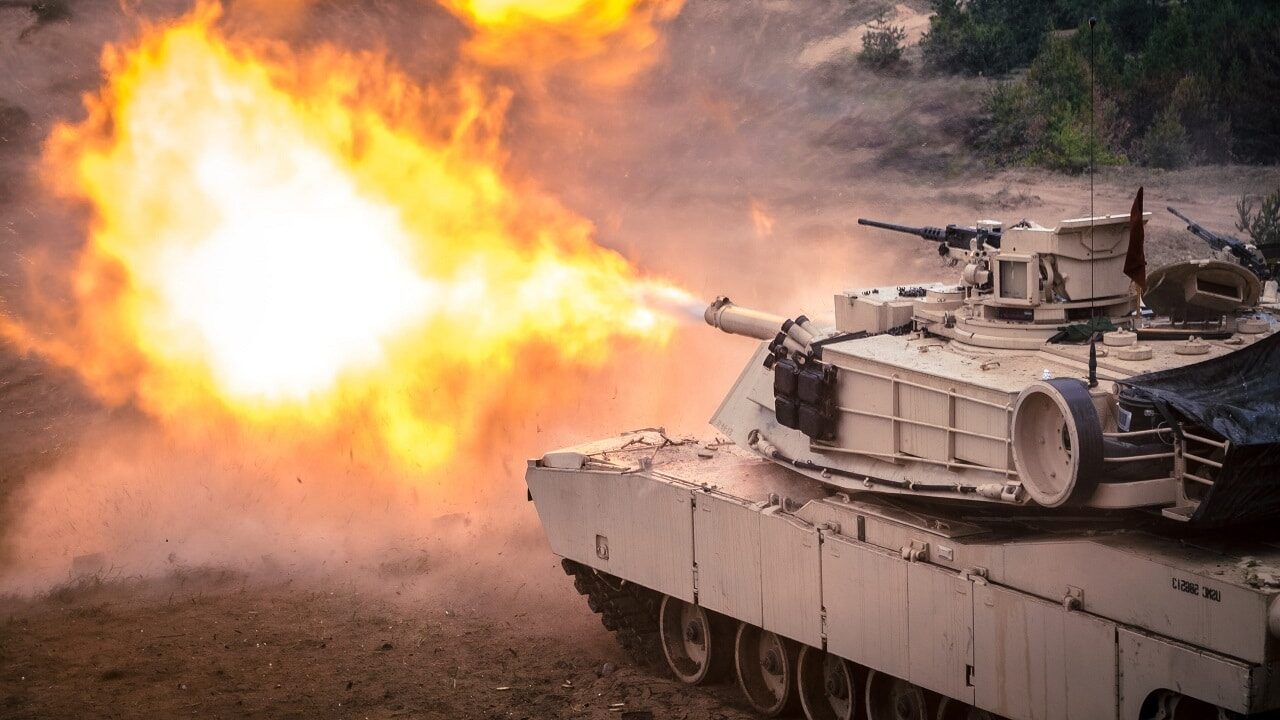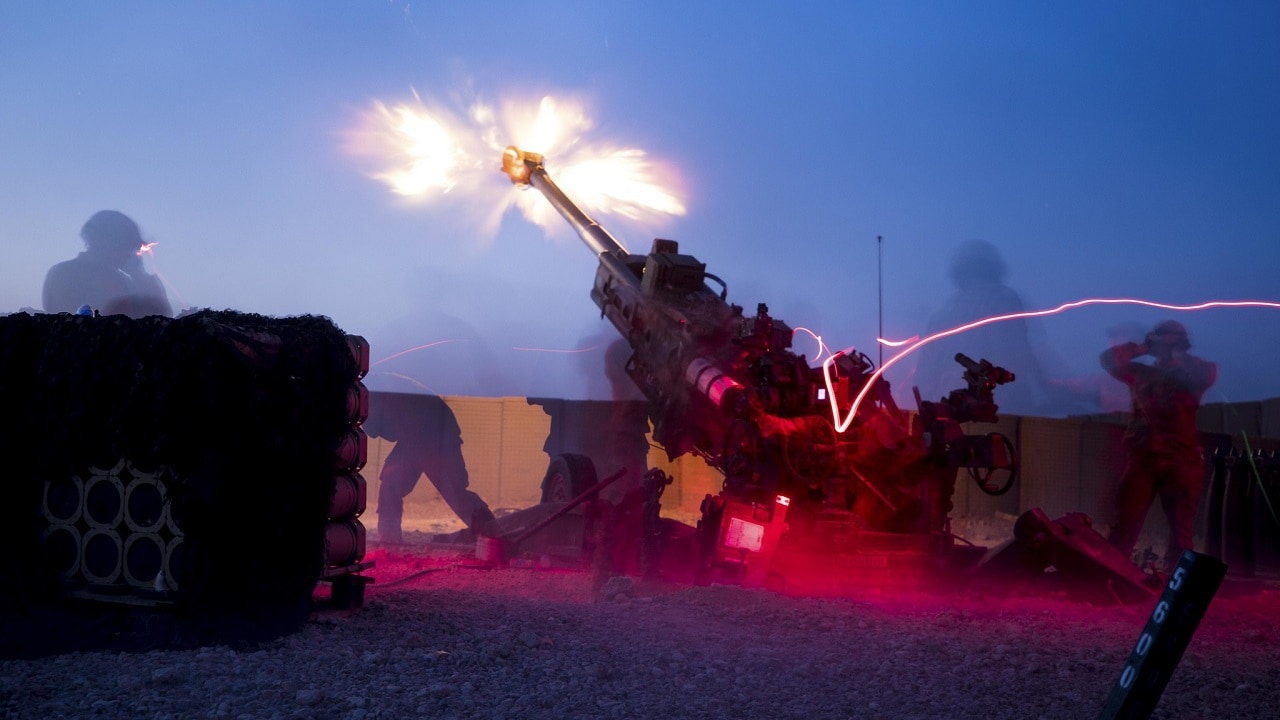Key Points and Summary: If U.S. military aid to Ukraine stops, Europe’s defense industries would struggle to fill the gap, experts say. American assistance includes essential intelligence, advanced systems like HIMARS, Patriot missiles, and extensive global supply chains—advantages Europe can’t fully match.
Key Point #1 – Despite Europe’s collective economic power, its fragmented military capabilities and decentralized decision-making processes would undermine efforts to substitute American support effectively. Moreover, Europe’s lack of integrated satellite intelligence limits its operational reach.

FORT BENNING, Ga. – Students in Armor Basic Officer Leader Course Class 20-005 conduct a platoon situational training exercise, Sept. 22, 2020, at Good Hope Maneuver Training Area on Harmony Church. Students train as both an attacking force and a defending force using the U.S. Army’s M1 Abrams Main Battle Tank. (U.S. Army photo by Patrick A. Albright, Maneuver Center of Excellence and Fort Benning Public Affairs)
Key Point #2 – Financing Ukraine’s aid through frozen Russian assets remains controversial, making Europe’s full support challenging. Without U.S. backing, Ukraine’s prospects for a decisive victory become significantly more uncertain.
Can Europe Replace American Military Aid for Ukraine?
The increasing possibility of a cutoff of US military aid to Ukraine has brought a long-running question to the forefront.
Namely, what are the prospects that Europe’s collective defense industrial capabilities could compensate – should this eventuality come to pass.
A Big Challenge
Several military analysts who spoke to the Voice of America (VOA) took on this question and provided their assessments for the possibilities of an “all-European backed” military operation in Ukraine.
Andriy Zolotarev, who is the director of the Third Sector Analytical Center, a Kyiv-based think tank, explained that US military aid is “uniquely important” to Ukraine’s defense and not very easily replaced by non-US suppliers.
“In particular, the US has huge stockpiles of weapons, they are a supplier of critically important intelligence information,” he explained. “All the European countries taken together do not have satellite [surveillance] groupings like the United States.”
“In addition, the US has extremely important and truly irreplaceable types of weapons for Ukraine — Patriot [air and missile defense] systems, ATACMS [long-range guided missiles], HIMARS [multiple launch rocket systems], as well as spare parts for armored vehicles and artillery systems, and much more. This cannot be discounted [as being available from other suppliers] in any way.”
He conceded that European manufacturers do turn out very capable pieces of defense equipment.
But the combined efforts of both the EU nations plus the UK could still not adequately replace what Ukraine has been receiving from the US.
“Their [European] efforts can soften the negative effect [of a cutoff in US aid], but will not avoid unpleasant consequences,” he continued. “This will simply delay the inevitable end. Europe is currently far from being in the best economic and military shape.”
Not A Single, Centralized System
Another commentator was Mark Feigin, a Russian human rights activist. He explained that while Europe boasts two NATO members with nuclear arsenals (those being the UK and France) and is also collectively far richer than Russia, but it is not a reliable substitute for US defense assistance.
As retired General Sir Richard Barrons pointed out in 2023 in a famous address, the EU nations plus the UK are a 15 trillion Euro economy.
But the raw numbers are not the whole story. While Europe’s economic and military might far surpasses Russia’s the potential on the battlefield is less than the sum of its parts.
This is due to the many European nations are – at least in military production and their armed forces – not “a single entity.”
“The strength of the United States is that it makes this or that decision in a centralized manner, which is then consistently implemented,” he said. “Europe’s potential is dispersed…In addition, the political situation in the EU countries is very volatile…All this keeps the Europeans from effectively using their obvious advantages [in the confrontation with Russia].”
Other experts point to systems like the US Patriot that have been used by Ukraine to take down Russian and North Korean ballistic missiles fired at Ukraine.
“One of the strengths of a system like the Patriot, or aircraft like the F-16 is that so many countries have procured them, operate them and also manufacture parts of those systems,” said a US defense industry executive in charge of foreign military assistance programs.
“This kind of a global footprint creates economies of scale and the ability to source parts, munitions, maintenance services from multiple nations. This is a force multiplier that European defense suppliers lack.”
Seizing Russian Assets
Also likely to come up in the process of European nations being pressed to provide billions in aid for Ukraine is the vexing issue of who is going to pay the bill.
One of the potential sources of financing are the billions in Russian funds frozen in European banks. The commentators the VOA spoke with state that while those funds are currently are inaccessible to the Russians, they are skeptical that the US or the Europeans would ever take the next step and seize those funds.
Cliff Kupchan, the chairperson of the Eurasia Group, a New York-based political risk consultancy, was among those who agreed that Europe would probably not be in favor of seizing these frozen Russian assets.

M1 Abrams Tank firing. Image Credit: Creative Commons.
“I think the Europeans are going to remain averse to the idea of breaking international norms on reserves and fear that Russia will then, as I think they would, seize Western governmental assets and Western private assets,” he said.
Collectively, this all mitigates against Europe being able to support Kyiv’s military to the degree that the US has thus far. It makes it hard to see a forecast for the future that includes a decisive Ukrainian victory.
About the Author: Reuben F. Johnson
Reuben F. Johnson is a survivor of the February 2022 Russian invasion of Ukraine and is now an Expert on Foreign Military Affairs with the Fundacja im. Kazimierza Pułaskiego in Warsaw. He has been a consultant to the Pentagon, several NATO governments and the Australian government in the fields of defense technology and weapon systems design. Over the past 30 years he has resided in and reported from Russia, Ukraine, Poland, Brazil, the People’s Republic of China and Australia.

